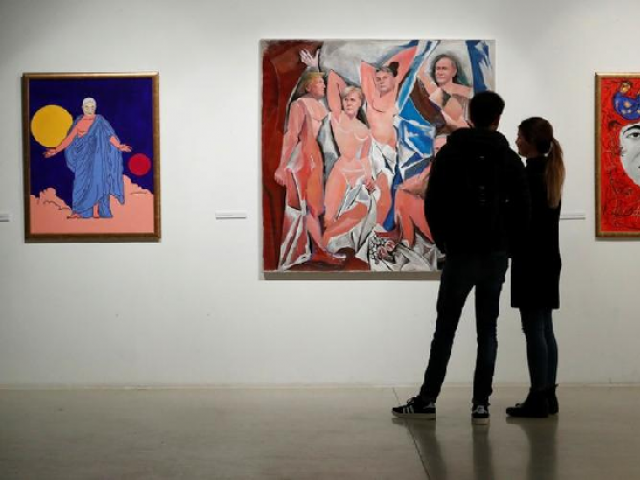
Pakistan is rarely given a seat at the big girls’ table, but art is one of the few instances when the world invites us to play: Rashid Rana’s Red Carpet fetched Rs34.4 million at Bonhams; institutions like MoMA and Guggenheim house Pakistani work.
But our platforms, and our artists are not united, and like our public, mistrustful of systems. Pakistan sport illustrates the perils of instability: Football has suffered four years of organisational conflicts, the cricket team has been tossed around like a foster child. Our Olympic committee outnumbers the athletes.
Culture and Freedom are the goals of development, and Pakistan deserves both. On 20th November, a panel discussion had the Karachi Biennale Trust (KBT) and artist Adeela Suleman face to face publicly for the first time since the KB19 controversy. It was peculiar to learn that KBT offered to stand with Suleman when her work was sealed, yet she chose to have a press conference with Jibran Nasir instead.
The move inadvertently pitted Nasir, a man with political ambitions, against the government, and compelled KBT to ‘pick a side’. Now there were affronted politicians too. KBT looked like they had abandoned an artist, talented KB19 curator Muhammad Zeeshan looked like he had abandoned KBT and his 97 other artists, and chosen Suleman (his colleague at an art institution).
We tragically placed culture and freedom against each other. Forty years ago Karachi had one art school and gallery. Today it is the region’s third largest art centre.
Gallerygoers are spoilt for choice, and platforms like IAMKarachi and Pursukoon Karachi create wonderful interventions. Art’s role in Pakistan’s prosperity is real, Russia and the US took the fight to space and sports after the Cold War.
In 2012 it seemed unlikely anyone would visit Karachi’s violent streets. In 2019 busloads of international visitors filled KB19 venues; some European curators even funded their trips. Several galleries commissioned work from Biennale artists, nourishing our art scene.
Should art be policed? Definitely not, but for our art world to prosper, it needs stability, and must honour contracts, systems and a code. In the absence of contemporary art museums, artists are dependent on galleries—vibrant necessities, but governed by supply and demand. In Canada, artists are given an artist fee by the provincial government when exhibiting at a public gallery.
This encourages artists to push their practice, and create noncommercial work. Pakistan’s art needs a courageous, noncommercial vision. Not for profit institutions like KBT offer that.
KBT CEO, Niilofur Farrukh has championed women’s rights, public spaces and freedom for decades. Her book ‘Pioneering Perspectives’ countered attempts by Zia’s regime to marginalize women.
As Vice President of Paris based, AICA International, she facilitated the growth of Pakistan’s art criticism. Karachi’s tinderbox is complicated, sometimes advocates of freedom are trapped.
The art world needs a contingency plan, akin to a building’s fire safety to counter efforts to stifle it. We must fight for both culture and freedom, not pick one over the other.
We must see the biennale for the miracle that grew to be tremendous. It mustn’t be destroyed by agencies or worse, our anger.
Zehra Hamdani Mirza is a Karachi-based writer and artist. Her career has spanned art, journalism, strategic communications and media.


1719211536-0/BeFunky-collage-(81)1719211536-0-165x106.webp)




















COMMENTS
Comments are moderated and generally will be posted if they are on-topic and not abusive.
For more information, please see our Comments FAQ